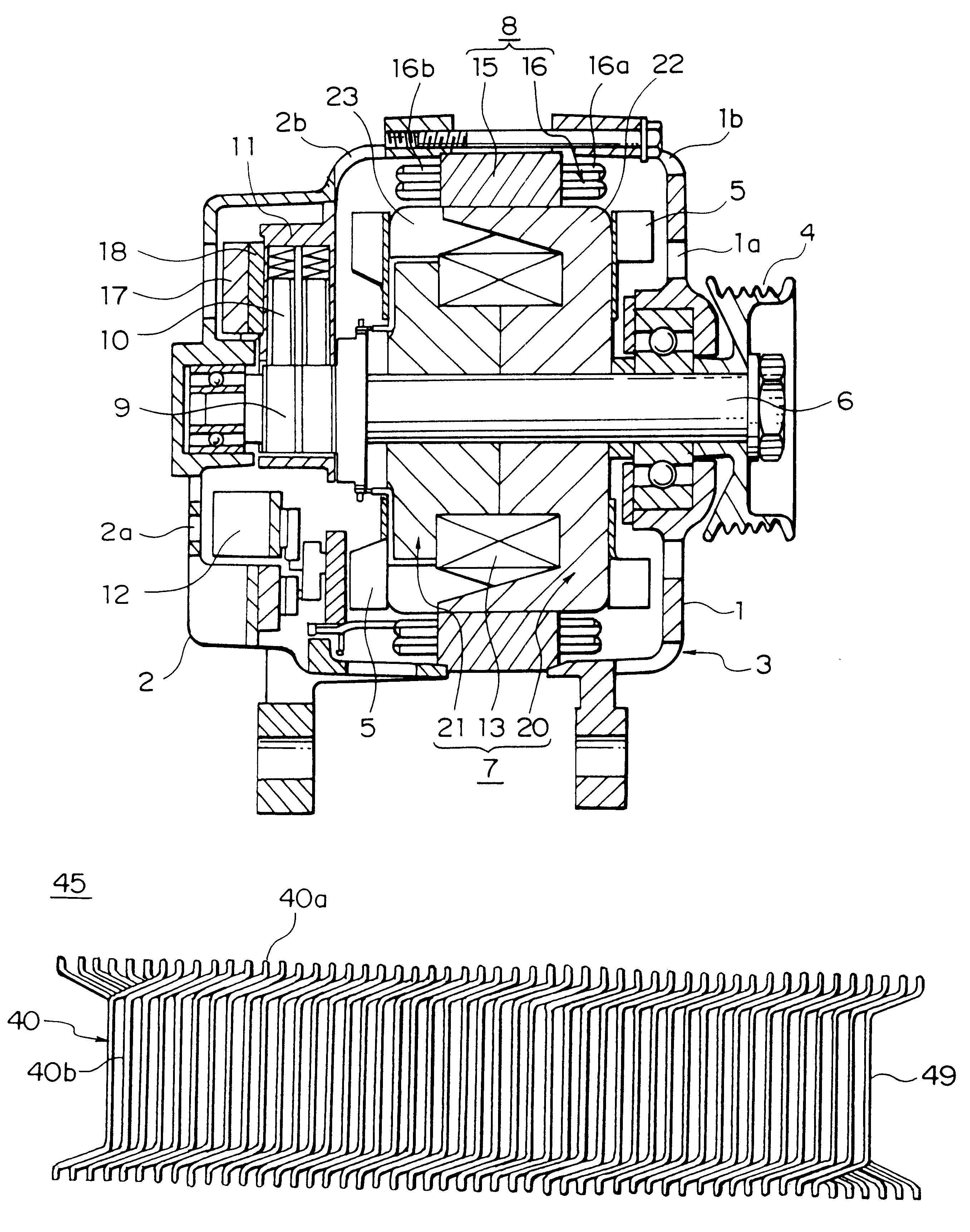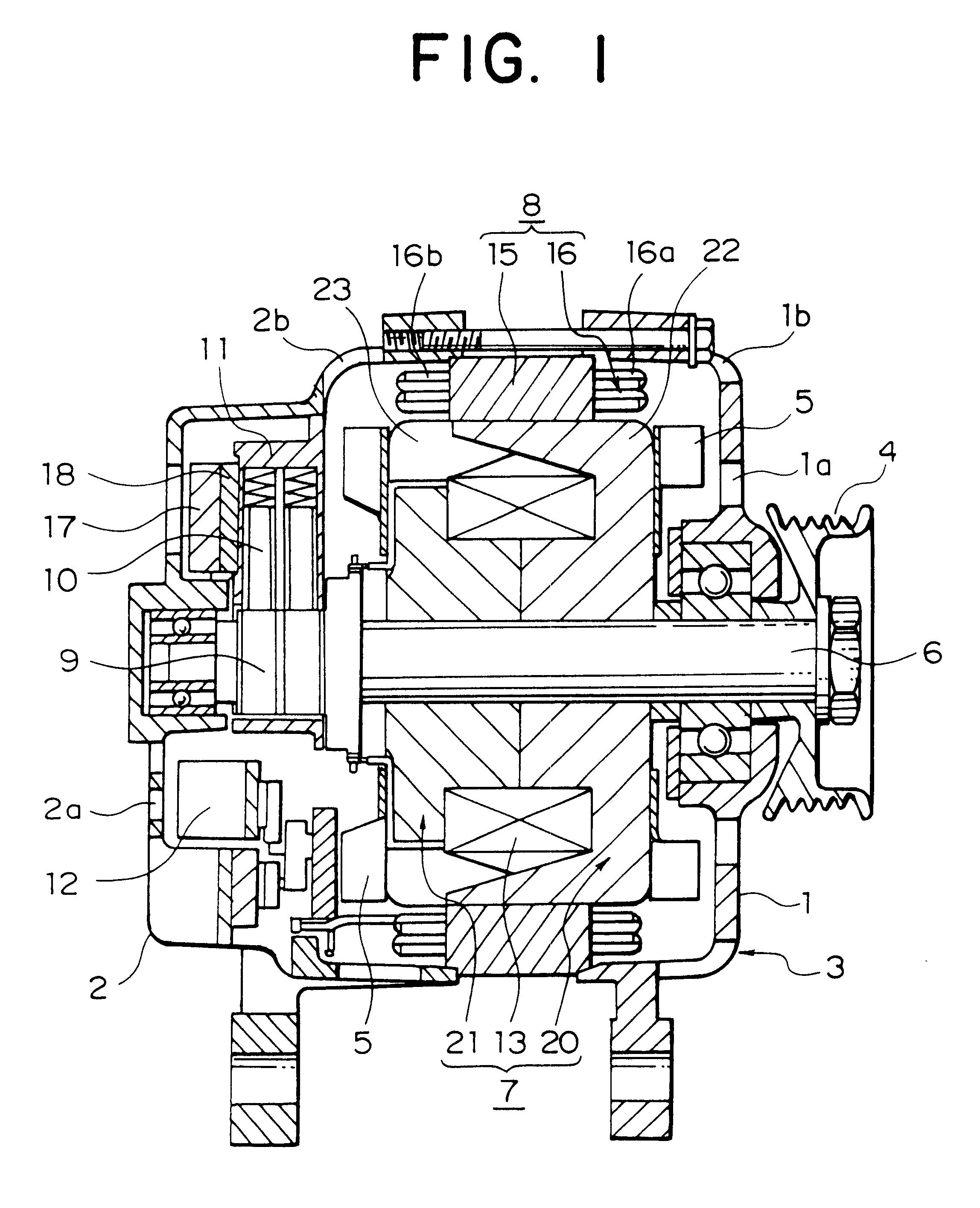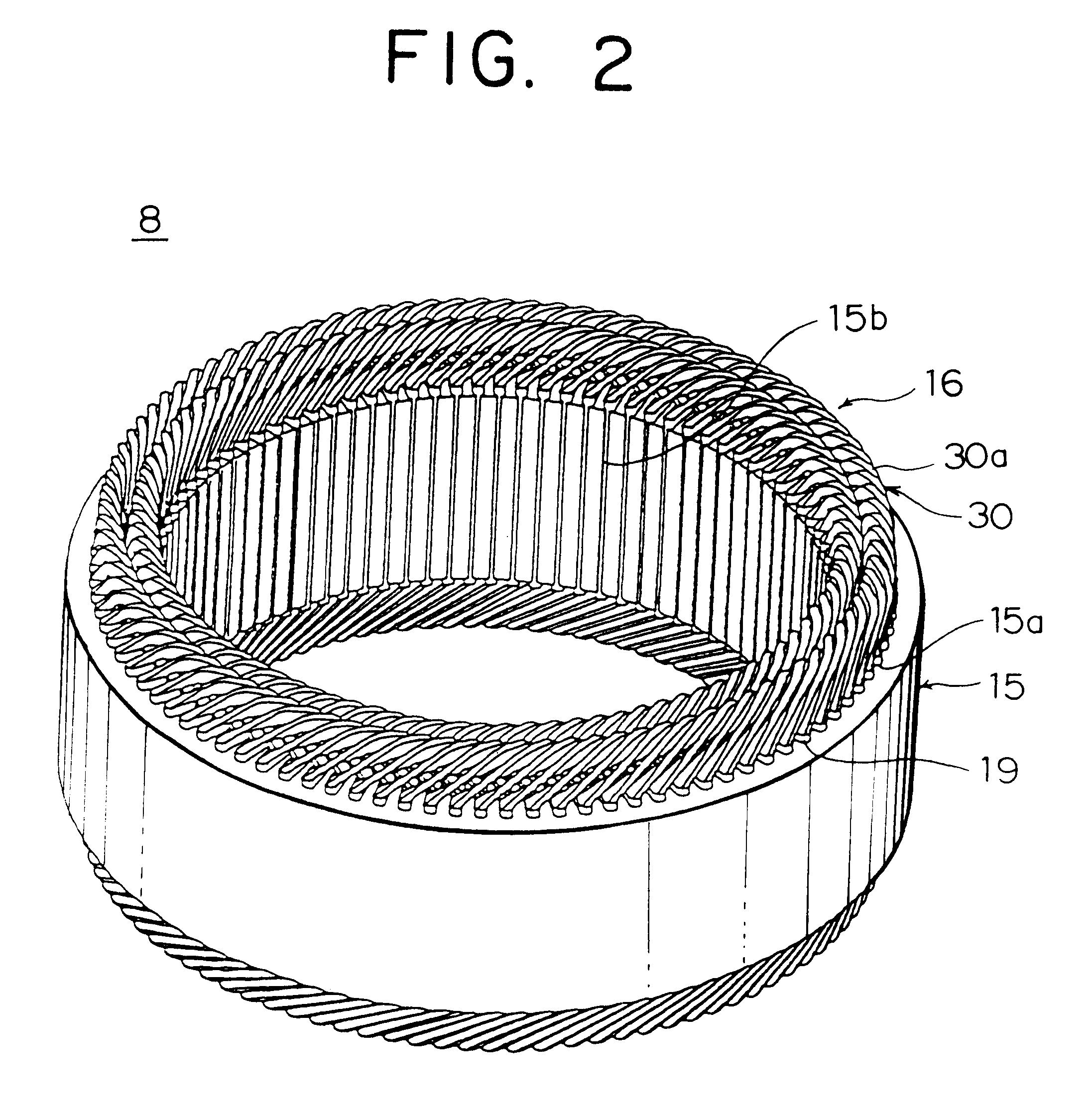Alternator
a technology of alternators and motors, applied in the field of alternators, can solve the problems of fan noise and magnetic noise in particular, noise from automotive alternators, and has remained a problem, and achieve the effect of satisfying performance and quality, and high serviceability and productivity
- Summary
- Abstract
- Description
- Claims
- Application Information
AI Technical Summary
Benefits of technology
Problems solved by technology
Method used
Image
Examples
embodiment 1
FIG. 1 is a cross section showing a construction of an automotive alternator according to Embodiment 1 of the present invention, FIG. 2 is a perspective showing a stator of this automotive alternator, FIG. 3 is an end elevation explaining connections in one phase of stator winding group in this automotive alternator, FIG. 4 is a circuit diagram for this automotive alternator, FIGS. 5 and 6 are diagrams explaining the manufacturing process for winding groups constituting part of the stator winding used in this automotive alternator, FIGS. 7A and 7B are an end elevation and a plan view, respectively, showing an inner-layer wire-strand group constituting part of the stator winding used in this automotive alternator, FIGS. 8A and 8B are an end elevation and a plan view, respectively, showing an outer-layer wire-strand group constituting part of the stator winding used in this automotive alternator, FIG. 9 is a perspective showing part of a strand of wire constituting part of the stator ...
embodiment 2
FIG. 16 is an end elevation explaining connections in one phase of stator winding group in the automotive alternator according to Embodiment 2 of the present invention.
In FIG. 16, one phase of stator winding group 161A is constituted by first to fourth winding sub-portions 41 to 44 each composed of one strand of wire 40. Copper wire material having a rectangular cross section and covered with an insulative coating 49, for example, is used in the strands of wire 40.
The first winding sub-portion 41 is formed by wave winding one strand of wire 40 into every sixth slot from slot numbers 1 to 91 so as to alternately occupy a first position from an outer circumferential side and a fourth position from the outer circumferential side inside the slots 15a. The second winding sub-portion 42 is formed by wave winding a strand of wire 40 into every sixth slot from slot numbers 1 to 91 so as to alternately occupy the fourth position from the outer circumferential side and the first position from...
embodiment 3
FIG. 23 is a partial cross section showing an automotive alternator according to Embodiment 3 of the present invention, FIG. 24 is a perspective showing a stator used in the automotive alternator according to Embodiment 3 of the present invention, FIG. 25 is a perspective showing part of the rotor used in the automotive alternator according to Embodiment 3 of the present invention, FIG. 26 is a perspective explaining the construction of the rotor used in the automotive alternator according to Embodiment 3 of the present invention, FIG. 27 is a circuit diagram for the automotive alternator according to Embodiment 3 of the present invention, FIGS. 28A and 28B are diagrams explaining the construction of a stator core used in the automotive alternator according to Embodiment 3 of the present invention, FIG. 28A being a side elevation and FIG. 28B being a rear elevation. Moreover, output wires are omitted from FIG. 24.
As shown in FIG. 23, in this alternator, a fan 5 is disposed only on a...
PUM
 Login to View More
Login to View More Abstract
Description
Claims
Application Information
 Login to View More
Login to View More - R&D
- Intellectual Property
- Life Sciences
- Materials
- Tech Scout
- Unparalleled Data Quality
- Higher Quality Content
- 60% Fewer Hallucinations
Browse by: Latest US Patents, China's latest patents, Technical Efficacy Thesaurus, Application Domain, Technology Topic, Popular Technical Reports.
© 2025 PatSnap. All rights reserved.Legal|Privacy policy|Modern Slavery Act Transparency Statement|Sitemap|About US| Contact US: help@patsnap.com



